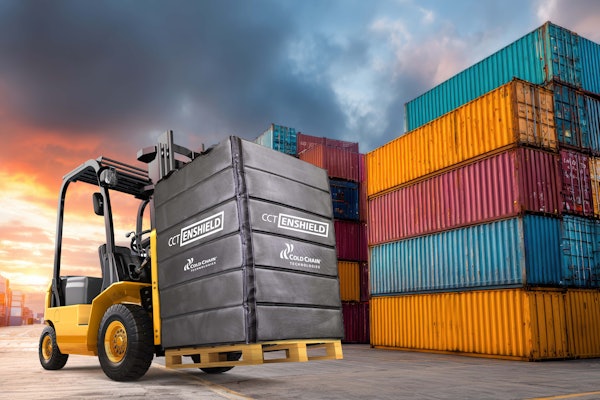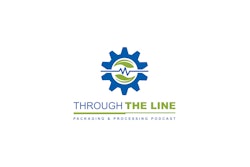End-of-the-line is the term describing the operations by which loads are unitized. For the vast majority of packaged goods, those operations involve stretch wrapping. End-of-the-line, however, is a misnomer. That’s because subsequent factors impact whether those loads remain unitized. Although the role of stretch wrapping is universally understood, less understood is how to systematically leverage it for competitive advantage. The key concept is load containment.
What it is. Load containment is the ability of stretch film to keep the load intact; alternatively, it’s the force applied by the stretch film required to maintain load integrity.
Why it’s important. It makes possible the abilities to handle, store, and transport a quantity of goods as a unit, the benefits being operational efficiencies, cost-savings, and safety. Those abilities and benefits are proportional to the extent to which the load is contained within its desired geometry. The worst-case scenario is for the load to come apart, tumbling down. Lesser failures also can be consequential, for example, whenever the load gets out-of-square, e.g. leans, necessitating corrective measures.
How the bottom-line is affected. Most fundamentally, whenever load containment failures result in unsellable goods, there is a direct loss of profits. Other profit leaks occur from the sorting and the disposal of unsellables, along with the assembling of any remaining sellables into new unit loads.
Conventional thinking is outdated. It’s tempting for companies not to take a deep dive into load containment issues. It’s easier to assume that the stretch wrapping was adequate and that load containment failure likely was the result of improper material handling, improper storage conditions, rough transportation, or any of those working in combination. Granted, any of the aforementioned can compromise load containment. Nonetheless, that’s not justification for ignoring possible inadequacies of the stretch film.
Enlightened companies don’t relegate packaging to an afterthought. Rather, they integrate it into the earliest stages of product development. Often the integration is extended to tertiary packaging, including the type of pallet, pallet load patterns, and unit load dimensions and weights. Ironically, even some otherwise-enlightened companies treat stretch film as an afterthought.
The main reason for the contradiction is the belief that stretch film is a commodity. In other words, they think stretch film is stretch film, available at the last minute from a variety of processors and distributors. The truth is that stretch film is an engineered material that lends itself to customized, case-specific applications.
Sure, user companies know the mechanics of stretch wrapping: a roll of film is wound around a load, overlapping as the process proceeds from bottom to top. What many companies are unable to answer, however, is whether the right film is being used, how tightly should it be wound, how many revolutions should be performed, and what amount of overlap is best. Those companies, consequently, can only guess about the adequacy of their load containment.
Every user company can explain what it does to achieve load containment. Not every one of them, however, can justify why it does what it does, defaulting to “That’s just how it evolved.” Such a state-of-affairs might have started with field reports about stretch film coming apart. Then came any of a series of knee-jerk responses. “Let’s increase the number of wraps,” or “let’s increase the amount of overlap,” or “let’s increase the gauge (thickness) of the film” or “let’s increase the tightness.” It’s a shot-in-the-dark approach, subject to the next field report.
Almost to a one, the aforementioned responses result in an increased usage of stretch film. That is inconsistent with sustainability. Furthermore, it saddles the recipient, such as a retailer, with additional disposal requirements. The stretch film supply industry has responded with lower-gauge films, said to be as strong as their higher-gauge predecessors. But gauge alone does not exempt the user company from the other decisions that factor into load containment.
Cost of doing business or just costly business? There are decision-makers who argue that a damage-free supply chain is unattainable and therefore damaged goods are a cost of doing business. Even if one accepts the premise and the conclusion, the goal should be to achieve as near to perfection as possible at as low a cost as possible. Analysis and data-gathering can quantify losses from damaged goods, for example, as a percent of annual sales. That way, the size and scope of load containment (or lack thereof) comes into relief.
The wrap-up. Optimal load containment starts with the right type of stretch film in the right gauge. The film has to be applied in the right number of revolutions, with the right amount of overlap, and with the right amount of holding force. Regarding the last-mentioned, the holding force should be adequate from top-to-bottom, to avoid sway.
But everything is left to chance, unless there are standard operating procedures (SOPs) that minimize variance, allow measurement, and make possible repeatable success. Such are the hallmarks of a systematic approach to load containment. Getting there will be the subject of next month’s article.























